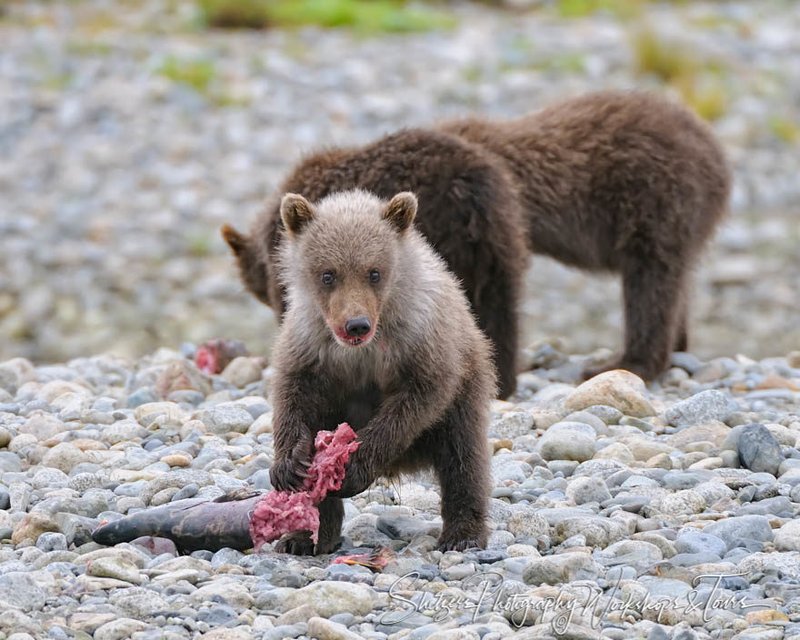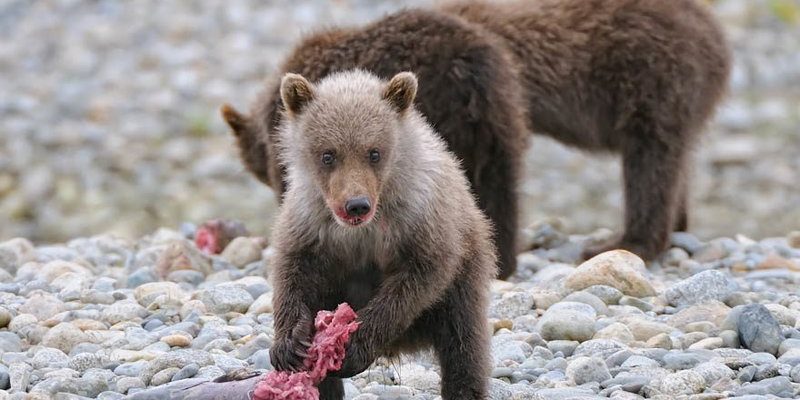
Now, you might be wondering how these big mammals manage to find food and stay alive, especially when they roam through both forests and mountains. Grizzly bears have adapted to their surroundings, developing unique ways to hunt and forage for anything from berries to fish. Let’s dive into the deliciously complex world of grizzly bear diets and hunting strategies, where every meal can be a thrilling adventure.
The Grizzly Bear’s Omnivorous Diet
Grizzly bears are classified as omnivores, meaning they eat a mix of both plant and animal matter. Their diets can vary widely depending on the season and the region they inhabit. In the spring, you’ll find them munching on young green plants and fresh shoots, which are crucial for regaining energy after hibernation. As summer rolls around, fruits and berries become a staple. Can you picture a bear happily gorging on ripe blueberries or salmonberries?
Here’s a quick look at what’s on the grizzly menu throughout the year:
- Spring: Grasses, flowers, and new plant growth.
- Summer: Berries, roots, and insects.
- Fall: Nuts and salmon, which they often catch in rivers.
- Winter: While hibernating, they rely on the fat reserves built up over the warmer months.
This varied diet allows grizzly bears to adapt to different environments and food availability. For instance, in coastal areas, they might feast on fish, while in mountainous regions, they rely more on plants and small mammals. This adaptability is essential for their survival and showcases the cleverness of these magnificent creatures.
The Role of Salmon in the Grizzly Diet
In areas like Alaska and the Pacific Northwest, salmon plays a starring role in the grizzly bear’s diet. When salmon spawn, they swim upstream in large numbers, making them an easy and energy-rich food source for bears. It’s like a buffet opening up right in their backyard! Grizzly bears can gain a significant amount of weight during this time, feasting on these fish to build up reserves for hibernation.
During the salmon run, grizzlies exhibit some interesting hunting strategies. They can often be seen standing in the water, waiting for fish to leap by. With a swift swipe of their powerful paws, they can catch fish with impressive accuracy. The process is not just about strength; timing and patience play crucial roles too. It’s like watching an expert angler at work!
What’s even more fascinating is how grizzlies help the ecosystem by catching salmon. When they eat the fish, they leave behind scraps that enrich the soil, making the surrounding area more fertile. This means that grizzlies not only feed themselves; they also help other plants and animals thrive.
Foraging for Berries and Vegetation
While you might picture grizzlies as fierce hunters, they also have a gentle side when it comes to foraging for berries and plants. In summer, grizzlies can be seen rummaging through thick bushes, their noses twitching as they search for ripe berries. They have an impressive sense of smell, allowing them to detect food from miles away.
Berries like blueberries, blackberries, and huckleberries are not just tasty snacks; they are packed with nutrients that help the bears gain weight and energy. Can you imagine a bear devouring a whole bush of berries? Their love for fruit is real!
In addition to berries, grizzlies also eat roots and tubers, which are often hidden underground. They’ll dig up these plants using their powerful claws, showcasing their adaptability in finding food. This method of foraging not only keeps them fed but also plays an essential role in the ecosystem by allowing new plants to grow in the disturbed soil.
Hunting Small Mammals and Insects
While large fish and berries often steal the spotlight, grizzly bears will also hunt small mammals when they’re feeling especially hungry. This can include squirrels, rabbits, and even larger ungulates like deer if the opportunity arises. Think of a grizzly bear as a versatile diner, willing to sample anything that’s on the menu.
Now, you might wonder how they go about catching these swift creatures. Grizzlies are surprisingly fast and clever. They can use stealth to sneak up on their prey, or they might turn to scavenging if they find a carcass. Their powerful jaws and strong teeth give them the tools they need to consume tougher animals.
Insects, particularly ants and bees, are another source of protein that bears enjoy. In spring, they’ll dig into ant hills to get their fix. While it might not seem glamorous to us, those tiny critters pack a nutritional punch for the bears, helping them bulk up after winter.
Seasonal Changes in Diet and Strategies
As seasons change, so do the grizzly’s dietary needs and hunting strategies. In spring, as the snow melts and new growth appears, grizzlies focus on foraging for young plants and roots. As summer rolls in, their diet shifts heavily toward fruit and salmon. By fall, they start eating nuts and berries to prepare for hibernation.
This cyclical nature of their diet is crucial for their survival. Each season offers different food sources, and grizzlies have honed their skills to maximize intake during each period. It’s like nature’s way of giving them a constant buffet, ensuring they have what they need for the cold months ahead.
Another important aspect is how these variations influence their behavior. During the salmon runs, for example, you might find multiple bears congregating in the same area. This competition and social interaction can shape their hunting strategies, forcing them to adapt quickly to ensure they get enough to eat.
Impact of Habitat on Hunting Techniques
Grizzly bears live in diverse habitats, from dense forests to open meadows and rugged mountains. Each environment shapes their hunting techniques and food sources. In forested areas, they might focus more on foraging and scavenging, while in open spaces, their hunting might lean towards larger prey.
In coastal regions, fishing is a primary strategy due to the abundance of salmon, while inland bears often have to rely on foraging and smaller mammals. This adaptability showcases their intelligence as they learn to navigate and thrive in various settings.
Additionally, the presence of other wildlife can also impact grizzly hunting techniques. If a bear finds itself in a region with high deer populations, it may adjust its strategies to hunt more effectively. The ability to learn from their environment is what makes grizzly bears such remarkable creatures.
Conservation and Human Interaction
The relationship between grizzly bears and humans has always been complex. As we continue to encroach on their habitats, understanding their diets and hunting strategies becomes vital for their conservation. Grizzlies face challenges from habitat loss, climate change, and human-wildlife conflict, which can disrupt their feeding patterns.
Educating ourselves about these magnificent animals allows us to coexist peacefully. For example, keeping food secured during camping trips can help discourage bears from seeking out human food sources, reducing negative interactions.
Moreover, recognizing the importance of salmon runs and berry habitats helps us understand the ecosystems we share. Preserving these areas is crucial for grizzly bears and the overall health of our environment.
In conclusion, the diet and hunting strategies of grizzly bears are a captivating glimpse into the life of one of nature’s most awe-inspiring animals. By understanding what they eat and how they hunt, we can appreciate their role in the ecosystem and work towards protecting their habitats for future generations.

